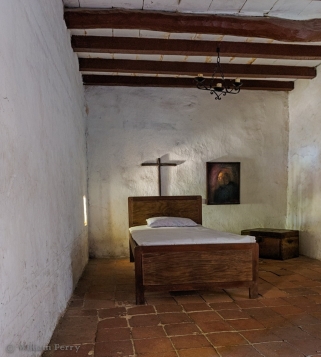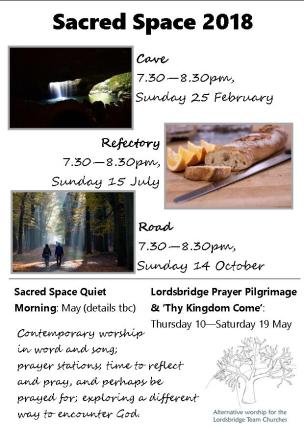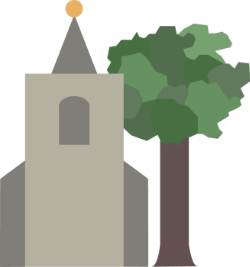 The cloister, the refectory, the chapel, the cell, these are places in a well ordered monastery. We see their remains when we visit cathedrals and abbeys. But what are their contemporary equivalents now? Can we learn from the life and rhythm of a monastery as we shape our existing worshipping communities for a healthy future? Is this somewhere that faithfulness and re-imagining can come together? Some think it is.
The cloister, the refectory, the chapel, the cell, these are places in a well ordered monastery. We see their remains when we visit cathedrals and abbeys. But what are their contemporary equivalents now? Can we learn from the life and rhythm of a monastery as we shape our existing worshipping communities for a healthy future? Is this somewhere that faithfulness and re-imagining can come together? Some think it is.
Cloister, refectory, chapel, cell – each place represents a different task or function of a sustainable Christian community. The cell is for being alone with God and for personal space. The chapel is where we meet with God and others in worship. The refectory is for hospitality and the sustaining of friendships. The cloister is where we bump into people , a place for renewing contact and chance conversations.
, a place for renewing contact and chance conversations.
There are other spaces too, including the scriptorium, a place of learning and transmitting what is learnt. The garden is the place of work, for many of us the equivalent is the work place. Both of these can be creative places. The chapter-house is where the community meets to make decisions and to reinforce its vision and values. The hospitium is the place of hospitality for refuge and for healing. The road is the place to meet those beyond the monastery walls and bring Christ to them, particularly true of monastic orders such as the Franciscans.
This starts to get more interesting when we apply these places and their activities to ourselves. Where is your ‘cell’? Where (or when) do you set aside time to be in the presence of God alone? Where and when do you enter the ‘chapel’ to worship with others? Where is your ‘scriptorium’, that is where do you learn new things?
Our worshipping communities
 It gets more interesting still when we apply it to the lives of our worshipping communities – parish churches and others. This is not surprising since this model is derived from community life. At Sunday services, for example, we are often not only being in ‘the chapel’, but also ‘the scriptorium’, particularly if part of the service is geared towards learning, and followed by ‘the refectory’, as we spend time together over coffee. If we understand better that we are trying to do several things on a Sunday morning, all within an hour or so, and sometimes in the same physical space, it might help us be more intentional about each, and about the transitions from one to another. For instance, if we think of that noisy, chatty time as people arrive as ‘cloister’ time then we recognise its value and can think more clearly about how to signal the transition into ‘chapel’ time. Or perhaps we recognise that the scriptorium for some needs to be at another time and place.
It gets more interesting still when we apply it to the lives of our worshipping communities – parish churches and others. This is not surprising since this model is derived from community life. At Sunday services, for example, we are often not only being in ‘the chapel’, but also ‘the scriptorium’, particularly if part of the service is geared towards learning, and followed by ‘the refectory’, as we spend time together over coffee. If we understand better that we are trying to do several things on a Sunday morning, all within an hour or so, and sometimes in the same physical space, it might help us be more intentional about each, and about the transitions from one to another. For instance, if we think of that noisy, chatty time as people arrive as ‘cloister’ time then we recognise its value and can think more clearly about how to signal the transition into ‘chapel’ time. Or perhaps we recognise that the scriptorium for some needs to be at another time and place.
It also begs questions about whether when each of us is in our own workplace (our ‘garden’) we also recognise that this is part of the life of the faith community too. Or where and when is our community’s equivalent of the ‘hospitium’ into which we welcome those beyond the usual worshipping community for sanctuary or healing? Or where is our ‘road’; where do we go out into the wider community and seek those we can accompany or to whom we can be a blessing?
Some of the Lordsbridge Team Chapter (the clergy and LLMs) gathered in Ely at the Bishop’s House for a Quiet Morning in February 2018. It was led by Revd Jonnie Parkin a parish priest and pioneer who co-founded the worshipping community ‘Luminous’ in Lincoln using these principles, based on the work of George Lings and Ian Adams to shape it.
The area-wide Lordsbridge Team
We can go further still and consider the Lordsbridge Team – that is the whole network of worshipping communities that make up the benefice – as a community on a larger scale. At this level, ‘chapel’, that is our worshipping together, happens at our United Fifth Sunday Services and the Team’s Ascension Day service, at the termly Sacred Space gatherings, and to some extent via the dispersed Morning Prayer on Thursday mornings. The activities of ‘the refectory’ take place at events like the summer picnics we’ve held for the last few years or over coffee after the Fifth Sunday services, and perhaps we need more of these occasions together. The Team Council, Team Chapter gatherings and the weekly meetings of the Core Team function as our ‘chapter-house’.
worshipping communities that make up the benefice – as a community on a larger scale. At this level, ‘chapel’, that is our worshipping together, happens at our United Fifth Sunday Services and the Team’s Ascension Day service, at the termly Sacred Space gatherings, and to some extent via the dispersed Morning Prayer on Thursday mornings. The activities of ‘the refectory’ take place at events like the summer picnics we’ve held for the last few years or over coffee after the Fifth Sunday services, and perhaps we need more of these occasions together. The Team Council, Team Chapter gatherings and the weekly meetings of the Core Team function as our ‘chapter-house’.
But I wonder, are there some team-level, or area-wide ‘roads’, that is places to go to be with people beyond the collective worshipping communities? Perhaps the wedding fair at Burwash Manor, or the shops at Coton Orchard, or the woodland burial site are ‘roads’ that belong to the wider area west of Cambridge? I wonder, did the Lordsbridge School of Theology of a few years ago function as the team-wide ‘scriptorium’, and would it help to do something like it again?
A simpler version
Perhaps this is stretching things too far. As always, we have the challenge of deciding what works best at individual village level and what is better done together. And a scheme of as many as nine sacred places is necessarily quite complex.
A simplified version of these ideas is explained in Ian Adams’ book ‘Cave Refectory Road’. The cave is the inner life, the refectory stands for welcome, hospitality and community and the road is the places where we engage beyond the worshipping community, the village, the area or the world. ‘Cave’, ‘Refectory’ and ‘Road’ are the three themes that Sacred Space is taking this year to explore in each of its termly gatherings for reflection and prayer.
As Team Rector two of my three priorities for the Lordsbridge Team, for the next few years, are prayer and mission – thinking about them, growing and deepening them, resourcing them, practicing them. Alongside this, thinking of ourselves as a network of communities, rather than, say, a programme of events, better reflects both the reality on the ground, and the kingdom of God. Prayer, mission and community meet together in this monastic way of reflecting on the whole of what we do. To my mind, it is definitely worth a look.
References
- George Lings; Seven Sacred Spaces: Expressing Community Life in Christ. Booklet available from http://www.churcharmy.org.uk, search for ‘Seven Sacred Spaces’.
- Ian Adams; Cave Refectory Road: monastic rhythms for contemporary living.
- Materials used by Revd Jonnie Parkin in the Feb 2018 Lordsbridge Chapter Quiet Morning, downloadable here (worksheet) and here (slides).
